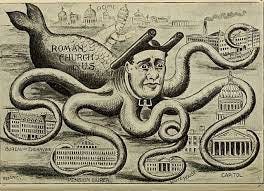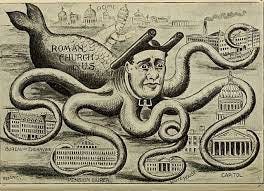Well, my bad. I wrote a post about how the recent majority opinion in United States v. Rahimi adopted continuity of constitutional “principles” over time as the best approach to the history and tradition of the Second Amendment; adopted a legal analogy to St. John Henry Newman’s idea of the “development of doctrine”; and in general was admirably rooted in a classical approach to law. It turns out that I had completely overlooked an amicus brief filed in the case by … the United States Conference of Catholic Bishops. And that brief, drawing extensively on Newman and other Catholic authorities, urged upon the Court the very approach, centered on constitutional principles and doctrinal development, that the Chief Justice’s opinion for the Court adopted, and that my previous post discussed.
Wrote the Bishops:
“[A]micus proposes that the form of analogical reasoning this Court ultimately adopts in determining whether a gun regulation is consistent with this Nation’s historical tradition should resemble the criteria followed by leaders in the Church to reconcile the development of doctrine with the obligation to remain faithful to tradition. These criteria focus in relevant part on continuity of principles between tradition and the modern articulation of doctrines [emphasis in original] …. [H]istory is evidence of a tradition, and consistency with tradition is the touchstone of constitutionality [emphasis in original]…. How, then, should the Court determine whether a modern approach to regulation, different in particulars from what has come before, is consistent with an older tradition? This question is a familiar one to amicus…. Newman taught that genuine developments of doctrine reflect ‘continuity of principles’ and do not ‘contradict and reverse the course of doctrine which has been developed before them.’ However, ‘considerable alteration of proportion and relation, as time goes on, in the parts or aspects of an idea’ is not inconsistent with faithful development…. Consistency with tradition thus depends more on faithful application of fundamental principles than on overt similarities between contingent applications to particular historical contexts…. Since consistency with tradition requires continuity of principles, this Court should take into account the basic principles of social order embodied in the Constitution and that the Nation’s traditions have sought to uphold.”
The crucial methodological section of the Chief Justice’s majority opinion, discussed in my earlier post, reads unmistakably as a distillation of the Bishops’ approach, complete with the Bishops’ emphasis on “principles” (including principles favoring governmental protection of social order); the need for continuity of principle; and the corollary need for what the majority opinion called “discerning and developing the law” as contingent circumstances change. It’s good to see (some of) the laity taking to heart the guidance of the Church. To be sure, as I explained in the prior post, others of the laity seem horrified by the thought of admitting constitutional principles and continuity of principle as critical concepts in Second Amendment jurisprudence and constitutional interpretation generally, and have also been at pains to deny that freestanding tradition is a source of constitutional law at all — at least in their solo concurrences. In those views, they seem quite out of step with the Bishops’ approach. (The Bishops’ statement that “consistency with tradition is the touchstone of constitutionality” — emphasis in the original brief — is pointed and striking here).
Incidentally, I’m happy to see that the Bishops’ exposition of Newman’s idea of the development of doctrine, and the legal analogy thereto, is very much the same as that offered in my earlier post. It also differs from an idiosyncratic reading of Newman suggested by a journalist named Matthew Walther, who indeed wants to leave Newman out of legal conversations altogether - a view that entails rejecting the whole premise of the Bishops’ amicus brief, and rejecting the majority’s adoption of the Newman-inspired idea of legal development. Like the Chief Justice, I’ll stick with the Bishops.





Not one qualified to discuss theology, I beg permission to enter a note as an outsider-observer informed by purely temporal matters be they perceived to be in the nature of gain or loss.
It seems to me the legal analogy to St. John Henry Newman’s idea of the “development of doctrine”, deeply rooted in the classical tradition, makes possible the adoption of a retrospective and prospective study of the development of political thoughts in western civilization.
Since time zero A.D., revolutions came, revolutions went, while not a whole lot has changed in the material lives of people on the dimensions of need-fulfillment and morals and ethics that MUST exist to proscribe conduct and behaviors inimical to both.
This has resulted in, by 2024, the erosion, among other things, of the respect given to US' Constitution and its interpretation as an instrument to assist benevolent governance of “more” of the people, not “fewer” of the people.
In short, it is a good thing the Chief Justice and the Catholic Bishops rhyme.
I found the Bishops' submission to be between partially and mostly okay UNTIL I got to then end and they started playing games when describing restraining orders and completely left out of the picture the biggest criticism and perhaps most important consideration regarding said proceedings' ability to infringe: in most states they are done ex parte.